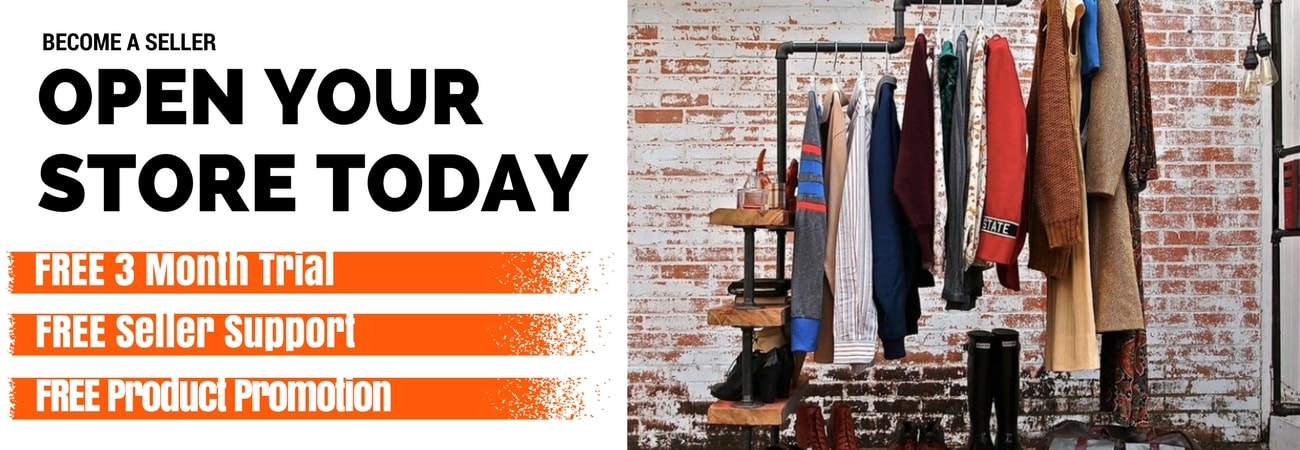Starting a Vintage Clothing Business – How to be successful

Many people have dreamed of leaving their 9-5 job to start their own vintage clothing business, but building a successful business in such a competitive marketplace in no easy task. It takes, passion, focus, hard work and dedication.
Paul, the founder of RETRuly is one of the pioneers of selling vintage online and shares his experience and provides some advice to help you make a success of your business and avoid some of the pitfalls.
So where do I start?
The very first thing you should do is decide on your business name. We recommend keeping it short and memorable. It is also important that the domain name is available. You can check the domain availability at Domain Check. Once you have chosen your name, reserve the domain name.
What should I sell?
This is one of the biggest challenges for any vintage business and one that needs careful consideration. In our experience, it is better to specialise in a particular area rather than trying to sell a bit of everything. This way you can become an expert and target your customers much more effectively. Where does your passion lie? Dresses, handbags, jewellery, men’s vintage? This is what you should specialise in.
Great, so now you have decided on what you want to sell. But before you start buying you need to ensure that you can actually make a profit. So what prices can I expect to achieve and how much should I spend on the stock? The unique nature of vintage makes this a challenging question but there is a really useful tool that for a small monthly investment can save you hundreds of pounds in the long term.
Terapeak is a fantastic resource for researching the market. It provides three months of ebay sales data, enabling you to determine the size of the market, prices achieved, the most successful vintage businesses selling what you plan to sell. Using this valuable resource not only gives you an idea of what you can charge, but you can also determine the size of the market and also research the successful businesses so you can learn from them. We also found that using Terapeak identified product ranges that we hadn’t originally considered. There is a small monthly fee, but we recommend this tool as it helps you make informed decisions that can be the difference between success and failure.
So you now have a more complete picture of what you can sell your products for. So now in order to make a profit you need to ensure you buy the stock at the right price. You need to factor in all your direct costs, cleaning, commission, sales fees and also you indirect costs, time, equipment costs, utility costs etc. As a rule of thumb, you need to be aiming at buying your stock at about 30-40% of your sale price.
Where can I buy stock?
This is probably the biggest challenge you will face as a vintage seller but there is no easy answer. Vintage sellers build up a network of suppliers over many years and closely guard these valuable contacts.
However, there are now a number of online vintage wholesalers that can be found with a simple google search. The only advice we have is to proceed with caution and don’t make a big purchase until you know exactly what you are getting. Where possible go and meet the wholesaler first and look at the stock, some even allow you to hand-pick. If this is not possible, start with a small sample order so that you can check the condition and quality. Don’t make the mistake that many new sellers do place a large order hoping for the best as you may end up with lots of dead stock that will kill your profit margin.
Where should I sell?
For a new seller we would recommend starting small and building your business over time. To do this there are two main options, either vintage fairs or open an online marketplace store. Selling on your own web page can be expensive, although there are many hosted solutions such as shopify, one of the hardest things is getting enough traffic to your new store to generate the sales that you need. This takes time and you need to either spend on Google Adwords and/or SEO to build your web traffic.
We would recommend opening a store on a specialist online marketplace. You will get an immediate online presence with no financial investment. There are a few options for vintage sellers, ETSY, eBay, ASOS Marketplace and now RETRuly. So which one is best for me?
ETSY is a huge online Marketplace with tons of traffic but it is an American business so most of the buyers are based there. Also, with millions of products you are likely to have to pay to promote your items to get the visibility you need.
eBay is the largest online Marketplace, with many Vintage Sellers doing pretty well on there, but many sellers are leaving them as it is not the site it used to be. With high fees, regular policy changes and a search algorithm that is geared towards multi-list items it is a real challenge to get your products seen.
If you have access to a good photography set up and models and can meet ASOS Marketplace rigid listings requirements this can be a good option for you, but you need to work hard to build your sales and reputation to get good visibility in their search. We have also found that although a paid promotion option is available it is hard to find an open slot as they tend to be block booked by other sellers.
RETRuly is a new marketplace, so can’t compete on the traffic generated by the corporate marketplaces, but as specialist marketplace with lower fees and fewer sellers to compete with it may be a good option for you. RETRuly is also run by a team with a real passion for vintage who can offer a more personal level of support and advice that the others can’t.
The Perfect Listing
So you have your stock and have decided where to sell so how do you list your items to maximise your chances of selling?
Because buyers are scanning lots of items you need to ensure that your get noticed. Your photos therefore need to be good. There are plenty of online resources with advice on product photography, so do you research. Whether you are using models, mannequins or flat photography it is essential that your images show your products of to the full, with various views and closeups showing texture, patterns or defects. We recommend investing in a good camera as this will pay for itself in no time with increased sales.
Your product title needs include all the key words that buyers are likely to use to search for your product as poorly worded titles will not be found in on-site searches or google. It is also a good idea to specify the product size in the title.
If you have grabbed the attention of a potential buyer with your photos and title your product description is your opportunity to close the sale. You need to be as descriptive as possible, include all dimensions, fabric details, care instructions and also identify any defects that may be present.
Product Promotion
So you have opened your shop and now need to attract buyers. Following the listing guidelines above will bring your customers but you also need to do all you can to promote your own store and listings.
Please read our guide to promoting your store
Store Management
The most effective way of growing your business is to build your repeat customer base. The first order is always the hardest as your customer is making a leap of faith in you. Never treat a sale as a one-off, instead treat it as the start of a relationship with that customer. Give them a reason to keep coming back by providing an excellent service, package nicely, ship quickly and respond immediately with any concerns that customer may have.
It is also very important to maintain your store by regularly listing new products and ensure that any items that are no longer available are removed from sale.
We really hope that you found this guide useful. Click here to download a PDF version of this guide.
The expert team at RETRuly have a vast amount experience in selling vintage online. All RETRuly store owners have direct access to our team of experts who are available to support and mentor.

